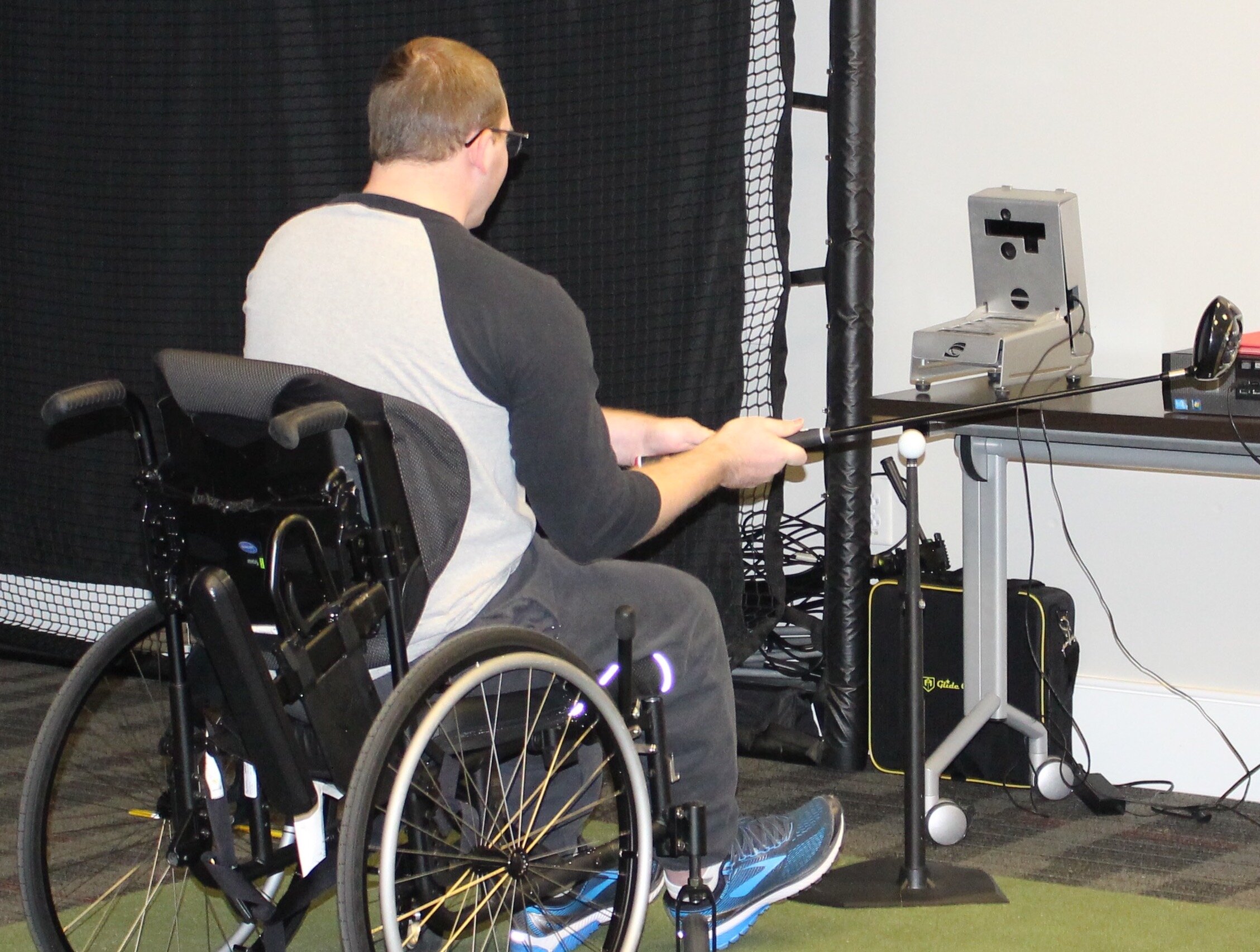One of the most highly touted aspects of adaptive golf has been its accessibility as a sport, particularly for those who have sustained a stroke, amputation, traumatic brain injury, or spinal cord injury. This is most often referenced in the fact that the ball is stationary and adaptations can be made to the equipment to help you be successful. While there are many challenges that Inspiration Golf faces when taking on the task of making golf truly accessible to the populations we serve, we wanted to focus on how we create strategies to provide early success in our adaptive golf programs.
The need for early success appeals to our microwave, instant-access culture, but it is also an important ingredient in starting something new. In the rehabilitation world, early success helps the client buy into the process and try the next step (sometimes literally as well as figuratively). In golf, especially for the new golfer, early success can be a powerful motivator and that is one of the reasons we’ve chosen golf as a platform for our programs. Golf has a way of instilling a kind of dedication to one’s craft, and so we try to combine the abilities of the golfer with modified equipment and techniques to help them experience success early and often.
The following are some examples of modified equipment or techniques we use with the adaptive golfer.
Short Drivers and Long Tees
One of the strategies we use in our programs is the Short Driver and Long Tee - a concept developed by the Adaptive Golf Academy. Shorter drivers are easier to control (read: make center contact on the club face or even contact in general) and reduces the swing weight. Striking the ball with the center of the club face increases compression of the golf ball (more distance) and Smash Factor (a measure of the transfer of energy from the club head to the ball at impact). Center contact on the club face also has the added benefit of a very pleasing feeling when the club head hits the ball. The Long Tee allows our golfers to swing on a plane that avoids hitting their legs without having to manipulate their stance.
Open Stance (one-handed swing)
For the seated golfer, coming up with a strategy to avoid hitting their legs with the golf club is often the initial challenge. This outcome is often very discouraging and the resulting pain can be a de-motivator.
By opening the stance and using the trail arm, the golfer is able to play from a more “side arm” position without the risk of hitting their legs.
Ball position is often off the front caster with shoulder range of motion and trunk control being advantageous to creating power and distance.
Standing (one-handed swing): Trail vs. Lead arm
Golfers who have deficits on one side of their body experience challenges with weight shift and balance. This disrupts their kinematic sequence and it’s often difficult for them to generate power.
A strategy to give them early success with distance is to have the golfer swing with their trail arm even if it means switching a RH golfer to a LH golfer. Some caveats to going this route can be an increased initial cost of different clubs, and possibly creating obstacles regarding their kinematic sequence. A discussion of a golfer’s goals is important before making a change like this.
The lead arm golfer has some advantages regarding shifting the bottom of the swing arc ahead of the ball on iron shots leading to better contact and compression of the golf ball. Swing speed can still take a hit from decreased loading into the trail leg but there’s less reinvention of the wheel involved.
*A more thorough discussion of these strategies is warranted and could be the subject of another article. Comment below if you’re interested in reading about it.
Assisted standing using the Paragolfer
The last strategy we will mention is a piece of tech we have at Inspiration Golf - the Paragolfer.
The Paragolfer is a power mobility device that has the ability to assist a golfer to stand - even if the golfer’s legs are paralyzed. It’s a remarkable device that is, essentially, a power wheelchair designed to be used on the golf course. It handles terrain well and distributes pressure so effectively that it can drive onto putting greens without damaging them.
Using the Paragolfer gives adaptive golfers the opportunity to stand during the golf swing and access parts of the golf course that were previously inaccessible because of physical limitations.
Going from sitting to standing is very much a game-changer. Although lie adjustments go a long way for a seated golfer, it’s hard to replicate the vertical momentum that comes from swinging a club that, quite honestly, was designed to be swung from a standing position. That being said, we leverage every appropriate variable (technique, physical skills, and technology) to maximize our golfers’ game.
We do recommend that programs that use this device develop a screening protocol to determine safe operation and physical readiness to use the Paragolfer.
Again, we can only touch on a few points as it will require a whole separate article to do the topic justice, but please comment if you would like to hear our take on it sooner rather than later.







